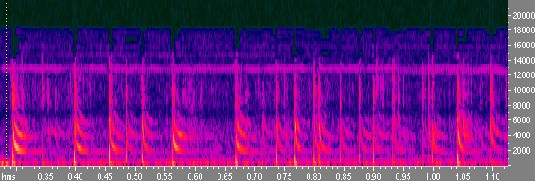Marshall Space Flight Center
| |
| |
| |
| |
| |
| |
| |
| |
| |
| |
|
|
Tweeks
Tweeks develop from sferics as your distance from the source is increased. The ionosphere and the earth act like a pipe allowing the signals to be heard at great distances. This distance also causes the signal to be modified by the environment. A physical example would be talking down a long PVC pipe. You voice is louder but also modified by the pipe.
To use an earthquake analogy, think of the P and S waves used to determine distance to an earthquake. The higher frequency P-waves arrive earlier than the lower frequency S-waves. Earth physicists use this delay in arrival to calculate the distance of the earthquake. The greater the distance the more separat ion. This process is called dispersion.
We see the same effect in Tweeks. A distance sferic creates radio waves at all frequencies. As these waves propagate through the ionosphere, the higher frequency waves travel more quickly that the lower frequency. This process of dispersion is the same as you see in seismic waves or with white light and a prism separating into the rainbow of colors.
Current theory and observation indicate that tweeks we detect are generated from lightning strikes taking place in the southern hemisphere. The signals follow the earth and the ionosphere, which act as a wave guide. This is the same process you see with fiber optics and your telephone conversations. Varying amounts of dispersion occur due to variations in the ionosphere.
Because tweeks require more conditions for generation than sferics, you will not hear nearly as many. Use the following link to train your ear. Then it will be time for you hunt for a tweek in the wild.
Listen!
Here is a graph of the tweeks you are listening to above:

Now learn about Whistlers!
Back to Scavenger Hunt Main
|
|

